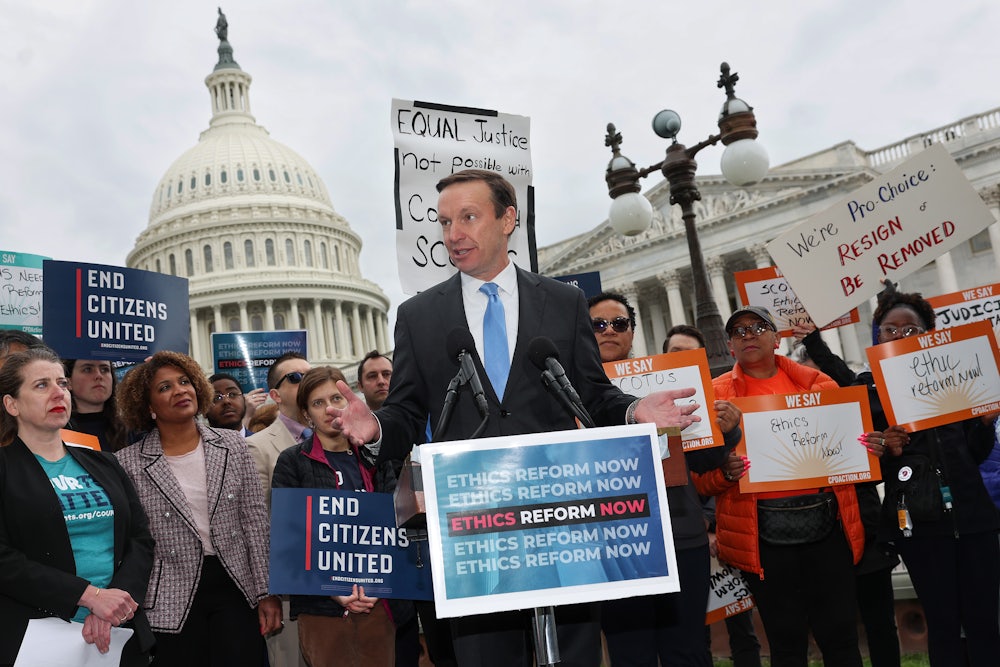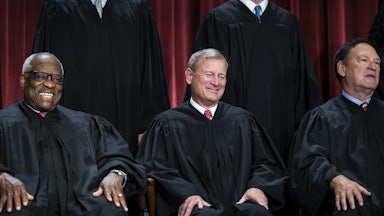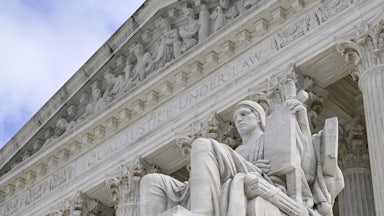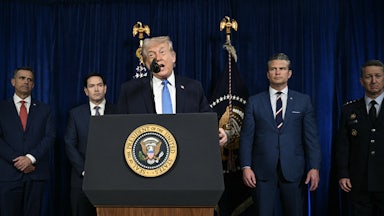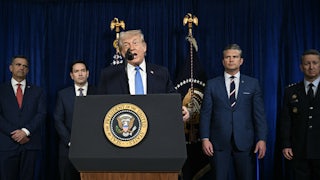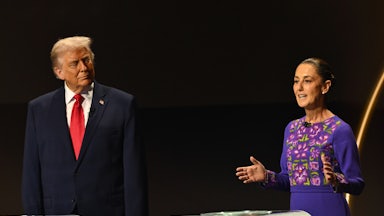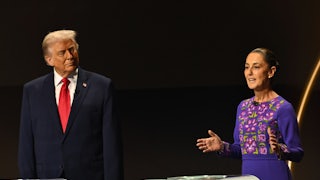This Thanksgiving, liberals should have spent some time showing gratitude for a historic victory—namely, the Supreme Court’s November 12 adoption of an ethical code of conduct. But many liberal pundits opted to pooh-pooh the measure instead, panning the code as “nonbinding,” “a joke, worse than nothing,” that “does nothing to address the ethical issues that have been following the justices,” and “doesn’t change anything.”
Why so Grinchy? These back-of-the-hand dismissals are, on the merits, exaggerated, and in significant respects inaccurate. More importantly, from a strategic standpoint, the downbeat spin starts court reformers off on the wrong foot for the next phase of what will be a long war over the justices’ ethical obligations and, more broadly, over their relentless encroachment on the constitutional primacy of elected politicians and voters. It’s time to get everyone back on the right track, embrace this accomplishment as an important milestone in the battle to rein in this wayward court, and set the table for the next steps.
For these life-tenured justices, who for decades had spurned a code of conduct as unnecessary, useless, and unworkable, this abrupt 180-degree about-face was grudging surrender to reformers’ superior political momentum. The justices’ embrace of this code reflects—indeed, the Preamble explicitly acknowledges—their need to persuade the electorate that they are bound by explicit and meaningful ethical rules. Key provisions of their code measure up to those criteria. However, critics have focused on weasel words—in the code and the unsigned “Commentary” that follows it—that they justifiably fear some justices may hope to trot out to cancel the code’s high-sounding strictures.
But such hand-wringing gets reformers’ strategic priorities backward. The overriding goal of reformers must be to maintain the political momentum that got them this win, in order to maximize, preserve, and build on its terms. Gearing up for the battles ahead means establishing a frame that highlights the best (not the worst) reasonable interpretation of the new code, to hold the justices to those robust standards, deter evasion and backsliding, and lay the groundwork for further advances. Because meaningful further advances are attainable, with or without action from this polarized Congress.
To begin with, liberals need to accept a realistic benchmark for calibrating the court’s work product. That would not be the ideal ethics regime they envisage as an end point—encapsulated, for example, by the bill recently reported on a party-line vote from the Senate Judiciary Committee. That measure, the Supreme Court Ethics, Recusal, and Transparency, or SCERT Act, which is currently stalled on the Senate floor, includes, among other items not in the Supreme Court’s code, enforcement arrangements that would subject the justices to at least a modicum of external supervision, as well as disclosure and recusal requirements governing litigants who funded justices’ confirmation campaigns.
The justices were not brought around to act by the remote threat of such legislation actually passing. Reformers’ trump card was a simpler but incontrovertible and politically irresistible demand—that the court adopt ethics rules substantially equivalent to those in effect for all other federal judges. Those rules comprise the code propounded by the Judicial Conference of the United States, the self-styled national policymaking body for the federal courts (which Chief Justice John Roberts chairs). On November 12 that is what the justices purported to do—and in fact, was for most intents and purposes what they did do.
Some critics have asserted that the new code ratifies, rather than prohibits, all the flagrant excesses that triggered the public opprobrium fueling the reformers’ triumph. If true, this complaint would mean that the preexisting Judicial Conference standards for lower court judges would not have barred any of Justice Clarence Thomas’s and Justice Sam Alito’s off-the-rails misadventures.
But that is not the case. In particular, both codes require “disqualification” from cases if “the Justice knows that the Justice … or the Justice’s spouse has a financial interest in the subject matter in controversy … or any other interest that could be affected substantially by the outcome of the proceeding.” (Emphasis added.) Any third grader would know that that plain language would bar Justice Clarence Thomas from cases that could implicate his spouse, Ginni, in the January 6 insurrection, otherwise working to overturn the 2020 election, or to further any similarly potentially illegal schemes to block or reverse Democratic ballot box victories in 2024.
Critics lament that Thomas, or a justice facing similar conflicts, could try to squirm out of disqualification by invoking one or more of several ambiguities, exceptions, and exemptions, some in both codes, others inserted in the new Supreme Court code or referenced in the unsigned “Commentary” purporting to explain background for its text. As noted below, each of those potential loopholes should readily be snapped shut by Supreme Court precedent or commonsense interpretation.
But before getting into those weeds, liberals should trumpet a broader point: The potential for evasive maneuvers opens a heaven-sent opportunity to insist that the justices interpret their code, not by hiding behind obscure footnotes and fine print subterfuges, but by what ordinary members of the public would expect those terms to cover—that is to say the original public meaning of the words that the justices themselves crafted.
That three-word phrase is the touchstone of the interpretational “originalist” credo long touted by conservative legal activists, on and off the bench, to demonstrate their fidelity to the enacted words of laws and the commonly understood meaning of those words. Liberals should squelch likely attempted circumventions before they arise, by stressing that judicial ethics guardrails mean what they say and what the electorate understands them to mean. They should savor this chance to table doubts about whether conservative justices will remember their professed constitutional faith when inconvenient for their own political or financial interests.
This leads to a broader point. The disqualification provisions quoted above from both codes purport to implement, and in large part reiterate verbatim, a federal criminal statute expressly applicable to all federal judges and justices: 28 U.S.C. §455, known to ethics experts as Section 455. That statute—which of course trumps any inconsistent administrative shenanigans by covered officials, including judicial officials—does not include, and cannot fairly be interpreted to include, any of the off-ramps that worry the court’s critics. Even if such ploys could be read to trump contradictory code provisions, they cannot override contradictory statutes.
And beyond Section 455, the same broad approach should govern the court’s interpretation of provisions, such as disclosure requirements, in other ethics laws that some of the justices have to date honored often in the breach. If liberal advocates highlight those straightforward message points from the get-go, the justices will be reluctant to evade them. If they nevertheless try to evade, that will deepen public perceptions that this lopsided far-right supermajority is, indeed, as Justice Barrett famously denied, a bunch of political hacks.
It should be no heavy lift to make short shrift of the potential loopholes in the justices’ code. One frequently cited difference between the Judicial Conference provisions for lower court judges and the Supreme Court’s requirements is that the former prescribes that a judge “shall” disqualify him or herself when the “Judge’s impartiality might reasonably be questioned,” whereas the latter prescribes that a Supreme Court justice “should” disqualify under such circumstances. Could that switch make a difference in the outcome of an actual conflict of interest challenge? Not likely.
Would an individual justice avow that all the code means is that, while it would be nice to recuse from adjudicating a case faced with a blatant conflict, he or she doesn’t have to? If the circumstances were as flagrant as, say, a case involving an investigation that could result in criminal liability for either the justice or his or her spouse, would a majority of the justices stand by and acquiesce in the resulting institutional damage? That seems especially remote—and dangerous for the court’s stature—since the statute, Section 455, which both judicial code provisions purport to implement, is unequivocally mandatory.
A second potential escape route noted by critics, and portentously emphasized by the Commentary that purports to constitute the Code’s legislative history, is an obscure doctrine called the “rule of necessity.” The Commentary underscores that this “time-honored rule of necessity may override the rule of disqualification.” Immediately preceding the Commentary’s eyebrow-raising rollout of this doctrine is a lengthy exposition of the assertion, often deployed by Chief Justice Roberts, that, unlike lower court judges, a recused Supreme Court justice cannot be replaced by a suitable substitute—thereby changing the intra-court dynamic or even the outcome of a case.
An obvious implication of this frame could be that even the most flagrant conflict of interest circumstances could be overridden, as “necessary,” in cases where recusal could change a 5–4 decision to a 4–4 tie, or even in all cases, if one took seriously the Commentary’s lament that losing one justice “may undermine the fruitful exchange of minds which is indispensable.” Hence, this conception of the obscure, judge-made “necessity” doctrine would wipe out altogether not only the court’s new recusal rule but the authorizing statute, Section 455—a literally absurd, hence legally indefensible, result.
Moreover, the sole case cited by the Commentary for its “necessity” rule has no relevance to the statute-canceling use to which the court implies it could be stretched. This 1980 Supreme Court case, United States v. Will, involved a one-of-a-kind challenge by federal judges, that they must be exempted from a law repealing a previously enacted pay raise for all federal employees, because of the constitutional guarantee that federal judges’ compensation “shall not be diminished during their Continuance in Office.” In such an oddball case, unlikely ever to recur, all federal judges, at every level, would be barred by conflict of interest strictures from presiding. Hence, the plaintiff-judges would literally have no forum to have their claim heard.
But disqualifying a Supreme Court justice would not deny a litigant access to any forum simply because a law-violating justice’s absence could alter the outcome, say, from 5–4 to 4–4. That would not constitute a “necessity,” any more than it has absences for various reasons, including interest conflicts, that have already altered outcomes.
As pointed out to me by judicial ethics expert Professor Stephen Gillers, the correct approach here is straightforward: Apply Section 455 in accord with its text and purpose. Contrary to the code Commentary’s implication, that would preclude letting a statutorily disqualified judge illegally sit on a case, let alone cast the deciding vote.
A third deficiency liberal critics have stressed is the absence of any mechanism for enforcing the Code’s restrictions. Obviously, that’s an important real-world lacuna. But any major formal apparatus involving external power to compel compliance would require legislation, and crafting such a law, free from serious separation-of-powers constitutional questions, would pose formidable drafting as well as require the surmounting of some significant political challenges.
Nevertheless, it’s possible that material improvements could be made to this ethics regime even without legislation. Certainly, the court, by a unanimous or majority vote, could—if its members could be so persuaded—adopt measures to increase transparency, prescribing public availability of decisions concerning recusal requests, the circumstances, and the reasons for whatever action is taken.
Indeed, there is administrative precedent involving analogous measures that is actually referred to in the court’s Commentary. As the Commentary notes, the court adopted a 2010 rule requiring that “Associate Justices must receive prior approval from the Chief Justice to receive compensation for teaching,” and “the Chief Justice must receive prior approval from the Court.” In principle, the court has inherent authority to craft similar procedures to assure compliance with the new ethics code and enable the institution to act, or at least resemble, a court rather than a pack of freelancing puppets of dark-money billionaires.
As a practical matter, the real sticking point, on which reformers now should train their focus, is the court’s tenacious insistence—as reaffirmed tartly in the Commentary—that “Individual Justices, rather than the Court, decide recusal issues.” At this juncture, this practice comes down to letting one or two justices persist in blackening public perceptions of the court’s integrity, thereby undermining its reputation, stature, and, as evidenced by the forced promulgation of this ethics code, its actual political autonomy—in real terms, its independence.
This obduracy contravenes the manifest interests of the institution, recognized by justices on right and left. Their recent displays of public intramural discord, now including Justices Kavanaugh and Barrett as well as Roberts and the liberal justices, have in fact already pierced the collegiality balloon. Attributing good faith to Roberts’s claimed reverence for the court’s above-the-battle status—as I do—his principal adversaries are Alito and Thomas, not liberal advocates or politicians.
Until very recently, the latter have instinctively seen the judiciary as an essential guardian of the requisite rights and machinery of democratic government, and most remain loath to irreparably damage the judiciary’s capacity to play that essential constitutional role. Alito and Thomas have made it crystal clear that that is not their priority, as it is not for the MAGA Republicans with whom those two justices are ever more unashamedly aligned. The new ethics code may not, at the moment, bind these Justices as effectively as anyone would like, but it does take a step in that direction and provide a firm basis for further opprobrium—and additional argument in the court of public opinion—should they stray again.
With the code in effect, reformers can expect numerous opportunities to build pressure on the court to apply and strengthen it. Predictably, motions to disqualify, based on its provisions, or allegations of other types of violations, such as disclosure, will pop up much more frequently than before November 12. The chief justice and his colleagues will face more public blowback if they persist in simply referring such motions to the individual justices whose conduct is challenged—especially if individual justices persist in ignoring the plain meaning of code provisions and failing to provide meaningful explanations of their disposition of those motions. A modest proposal for how Congress could kill lots of birds with one stone—and create at least a modicum of enforcement pressure for whatever ethics rules the justices ultimately adopt.
